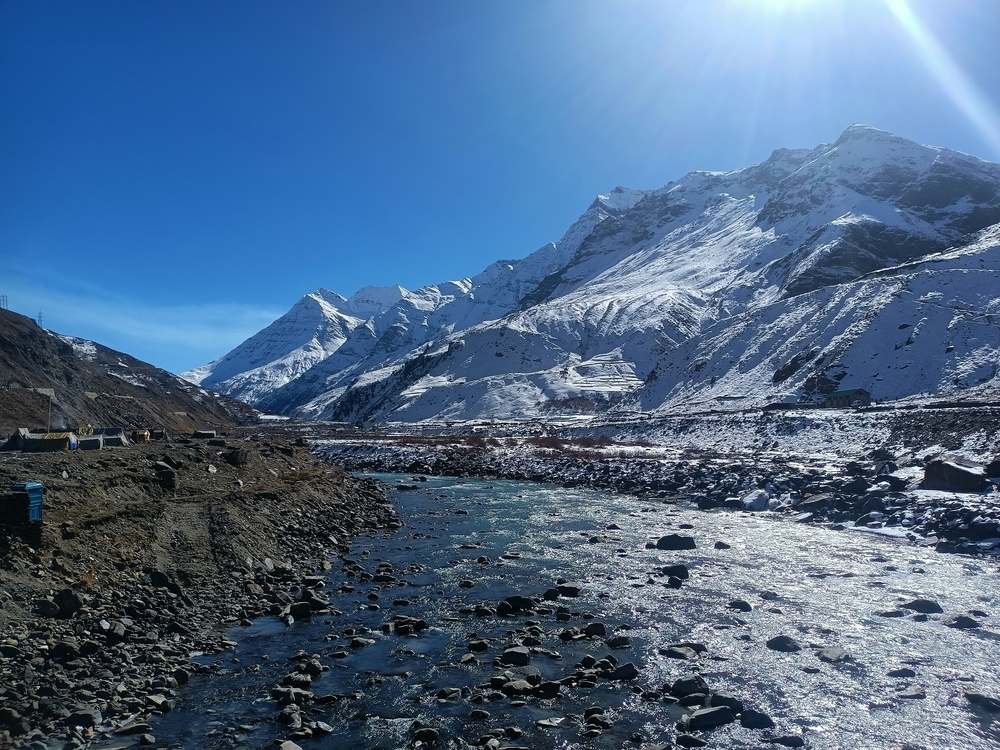Trekking in India: Top Trails for Adventure Seekers Across the Himalayas and Beyond
India’s diverse topography, ranging from towering Himalayan peaks to lush Western Ghats and remote northeastern ranges, makes it a dream destination for trekking enthusiasts. Whether you’re a seasoned trekker looking for high-altitude challenges or a beginner searching for scenic trails, trekking in India offers a wide range of experiences that cater to every level of adventure. From the snow-covered routes of Himachal and Uttarakhand to the forested paths of Kerala and Sikkim, India’s trekking trails promise not only physical thrills but also cultural encounters and stunning natural beauty.
1. Chadar Trek, Ladakh – The Frozen River Adventure
One of the most unique treks in the world, the Chadar Trek takes place on the frozen Zanskar River in Ladakh. Available only in winter (January–February), this trek involves walking on a sheet of ice surrounded by towering canyon walls. The extreme cold and unpredictable ice make it both challenging and rewarding. It’s not just a trek—it’s a surreal journey through an icy wonderland.
2. Roopkund Trek, Uttarakhand – The Mysterious Lake Trail
Roopkund, also known as the ‘Skeleton Lake,’ is located at an altitude of about 16,000 feet in the Garhwal Himalayas. The trail takes you through dense forests, alpine meadows, and snow-covered ridges, offering breathtaking views of peaks like Trishul and Nanda Ghunti. The trek is famous for the skeletal remains found at the lake’s edge, adding a mysterious allure to the adventure. Best done from May to October, Roopkund is ideal for experienced trekkers seeking a mix of thrill and legend.
3. Goechala Trek, Sikkim – Into the Heart of the Kanchenjunga Range
For those who dream of seeing Mt. Kanchenjunga, the third-highest mountain in the world, up close, the Goechala Trek in Sikkim is perfect. The trail offers panoramic views of not just Kanchenjunga but also 14 other prominent Himalayan peaks. It winds through rhododendron forests, glacial valleys, and remote monasteries, making it a spiritual and scenic journey. April–June and September–November are the best times for this moderate to difficult trek.
4. Hampta Pass Trek, Himachal Pradesh – A Scenic Crossover
The Hampta Pass trek is a favorite among first-time Himalayan trekkers due to its relatively moderate difficulty level and striking contrast in landscapes. The trail starts from the lush green Kullu Valley and crosses over to the arid Spiti Valley, offering trekkers everything from forests and meadows to snowfields and barren landscapes. This trek is usually done from June to September and is perfect for those looking to experience different facets of trekking in India within a short span.
5. Sandakphu Trek, West Bengal – The Panorama of the Eastern Himalayas
Sandakphu, at 11,941 feet, is the highest point in West Bengal and offers arguably the best views of the Everest and Kanchenjunga ranges together. On a clear day, trekkers can see four of the world’s five highest peaks: Everest, Kanchenjunga, Lhotse, and Makalu. The trail passes through charming villages, dense forests, and along the India-Nepal border, providing a rich cultural and visual experience. October to December is the best time for this trek.
6. Valley of Flowers Trek, Uttarakhand – A Monsoon Marvel
If you’re someone who prefers beauty over altitude, the Valley of Flowers trek is a paradise. Nestled in the Nanda Devi Biosphere Reserve, this UNESCO World Heritage Site is famed for its vibrant meadows that bloom during the monsoon (July to September). Trekking through the valley feels like walking into a giant natural bouquet. This relatively easy trek is perfect for beginners and nature lovers.
7. Tarsar Marsar Trek, Jammu & Kashmir – The Hidden Alpine Gem
Kashmir, often referred to as paradise on Earth, also offers some underrated but breathtaking trekking experiences. The Tarsar Marsar Trek takes you through alpine lakes, rolling meadows, and traditional Gujjar villages. Unlike the more commercial trails, this trek offers solitude and unspoiled natural beauty. Best visited between July and September, it’s a great choice for those looking to explore trekking in India beyond the beaten path.
8. Kumara Parvatha Trek, Karnataka – The Southern Challenge
While most people associate trekking in India with the Himalayas, the Western Ghats also offer excellent trails. The Kumara Parvatha Trek in Karnataka is a popular yet tough trail in South India. Rising to 1,712 meters, the trek offers dense forests, volcanic rocks, and sweeping views of the Coorg and Dakshina Kannada regions. Best done post-monsoon (October to February), it’s ideal for experienced trekkers who want to test their stamina in the south.
9. Chembra Peak Trek, Kerala – A Romantic Ascent
Chembra Peak, near Wayanad in Kerala, is known for its heart-shaped lake and lush greenery. Though not very high, it offers a beautiful trekking experience through the Western Ghats. The trail takes about 3–4 hours and is suitable for families and casual trekkers. It’s an ideal escape for those wanting a short, scenic, and rejuvenating walk in nature.
10. Dzongri Trek, Sikkim – A Short Yet Stunning Himalayan Experience
For those short on time but eager for a Himalayan trek, Dzongri is a great alternative to longer treks like Goechala. It offers similar views of Kanchenjunga and takes you through ancient forests, Buddhist monasteries, and high-altitude pastures. Lasting 5–6 days, the Dzongri Trek is best undertaken from March to June and again from September to November.
Final Thoughts
Trekking in India is more than just an adventure—it’s a journey through a country rich in natural wonders and cultural diversity. Whether you’re navigating the frozen rivers of Ladakh, chasing wildflowers in Uttarakhand, or trekking through tea gardens in the Western Ghats, the trails of India promise to leave you awestruck. With something to offer for every skill level and interest, it’s time to lace up your boots, pack your bags, and head out to explore the wild and wonderful terrains of this vast country.

